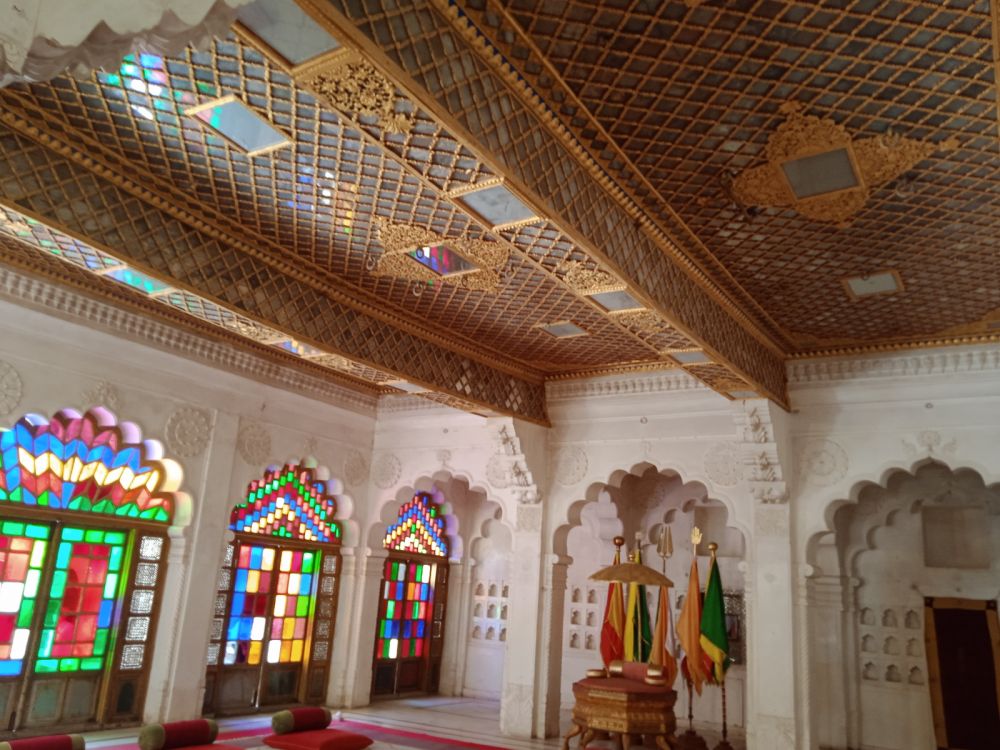

The majestic Moti Mahal, also known as the Pearl Palace, is nestled within the formidable Mehrangarh Fort in Jodhpur, Rajasthan, India. It stands as a testament to the architectural excellence and cultural heritage of the Rajput era. The palace was built during the reign of Maharaja Sur Singh of Jodhpur (1595-1619), and it has since become an iconic symbol of the city's royal past.
Moti Mahal has been a jewel in the crown of Jodhpur tourism for centuries. This palace was the seat where the Maharajas of Jodhpur held their court. It is said to be one of the largest of its kind in all the Rajput forts, and the sheer intricacy of the design and layout is something that draws visitors from all over the world. The name 'Pearl Palace' is derived from the way the lime plaster interiors of the palace shimmer like a pearl in the sunlight.
The palace features beautiful stained glass windows that create a kaleidoscope of colors across its rooms, further enhanced by the plethora of mirrors adorning the walls of Moti Mahal. The grandeur is palpable, from the intricately decorated ceiling to the polished marble floors, reflecting the sophistication and opulence of the era.
As a part of Mehrangarh Fort, Moti Mahal significantly contributes to the fort's status as a UNESCO-nominated World Heritage Site and one of the most well-preserved heritage structures in India. Tourism at Moti Mahal has flourished, with it becoming a must-see destination for those interested in history, architecture, and the timeless stories of India's royal families.
In recent years, there has been a surge in experiential tourism, with visitors seeking immersive experiences that combine history with local culture. In response, the Mehrangarh Museum Trust, which manages the fort, has organized various cultural and musical events within the precincts. Fusion concerts, art installations, and festivals like the Rajasthan International Folk Festival (RIFF) have seen participation from artists and attendees from across the globe, fostering a modern cultural dialogue within this historic venue.
Sustainable tourism practices are also being promoted, ensuring the preservation of Moti Mahal's delicate frescoes and architecture for future generations. Educational tours, heritage walks, and traditional craft workshops are part of this endeavor, making tourism at Moti Mahal both responsible and enriching.
For those planning to visit Moti Mahal, the best time is from October to March, when the weather is cool and pleasant. English and Hindi guided tours are available, adding value to the visitor experience by providing detailed insights into the historical significance of Moti Mahal. The palace is open to the public almost every day, with a small entrance fee that contributes to its maintenance and preservation.
Conclusion: The legacy of Moti Mahal in Jodhpur tourism is a narrative of royal grandeur, legendary history, and architectural marvels that continue to enchant and educate visitors from all across the world. Its significance in the tapestry of India’s cultural heritage remains as prominent as ever.